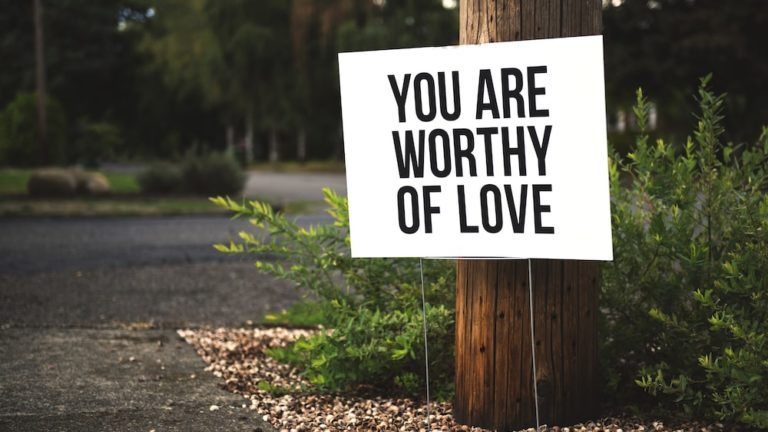9 Easy Gratitude Practice Tips For A Happier You
Hello there! Are you looking to make a positive change in your life? Have you ever considered the power of gratitude? In this article, we’ll explore the world of gratitude practice and how you can incorporate it into your daily routine to improve your overall well-being. Get ready to transform your life and become a happier you!
Gratitude is a powerful emotion that can positively impact your life in numerous ways. It’s not just about saying “thank you” – it’s a deeper feeling of appreciation and thankfulness for the people, things, and experiences that bring joy and meaning to our lives. By cultivating a consistent gratitude practice, you’ll not only increase your happiness but also improve your mental and physical health.
So, how do you start a gratitude practice? It’s easier than you might think! In this article, we’ll share 9 easy tips to help you develop this life-changing habit. Whether you’re new to the world of gratitude or looking to enhance your existing practice, these tips will offer practical guidance and inspiration for your journey.
Before we dive into the tips, let’s explore the importance of gratitude practice and the many benefits it can bring to your life. Are you ready to unlock the power of gratitude and experience a happier, healthier you?
The Importance of Gratitude Practice
Gratitude practice is essential for living a fulfilling life, as it helps us focus on the positive aspects of our experiences and fosters a sense of appreciation for what we have. By regularly practicing gratitude, we can shift our mindset from one of negativity and lack to one of abundance and positivity.

Benefits of practicing gratitude
- Improved mental well-being: Practicing gratitude has been shown to reduce stress, anxiety, and depression while increasing overall happiness and life satisfaction.
- Enhanced relationships: Expressing gratitude to others can strengthen bonds and create a more positive atmosphere in your personal and professional relationships.
- Increased resilience: Regular gratitude practice can help you better cope with adversity and bounce back from setbacks more quickly.
Practicing gratitude can improve mental well-being, enhance relationships, and increase resilience.
How gratitude practice affects mental and physical health
Gratitude practice has a profound impact on both our mental and physical health. Research has shown that individuals who regularly practice gratitude experience lower levels of stress, anxiety, and depression. They also report higher levels of happiness and satisfaction with their lives. Additionally, gratitude practice can improve sleep quality and even boost your immune system, making it an essential component of overall well-being.
On a psychological level, gratitude practice can help rewire our brains to focus more on the positive aspects of our lives, rather than dwelling on negativity. This shift in perspective can have a lasting impact on our mental health, helping us to develop a more optimistic outlook and better cope with life’s challenges.
9 Easy Gratitude Practice Tips
Ready to start your gratitude journey? Here are 9 easy tips to help you incorporate gratitude practice into your daily life and experience the benefits for yourself.
1. Start a daily gratitude journal
One of the simplest and most effective ways to practice gratitude is by keeping a daily gratitude journal. Each day, write down three things that you’re grateful for, no matter how big or small. This simple act can help you develop a habit of focusing on the positives in your life and train your brain to look for the good.
Not only will this practice help you become more aware of the blessings in your life, but it will also serve as a tangible reminder of the many things you have to be grateful for – especially on difficult days when you might need a little extra encouragement and perspective.
2. Practice mindfulness and savor the moment
Gratitude and mindfulness go hand in hand. To truly appreciate the present moment, it’s essential to slow down and fully engage with your surroundings. Try these tips for practicing mindfulness and savoring the moment:
- Take a few deep breaths and focus on the sensation of your breath entering and leaving your body.
- Observe your surroundings without judgment, taking note of the sights, sounds, and smells around you.
- Reflect on the positive aspects of your current situation and appreciate the beauty and joy present in the moment.
By practicing mindfulness and remaining present, you’ll be better able to recognize and appreciate the many blessings in your life.
3. Express gratitude to others
Expressing gratitude to others is a powerful way to strengthen relationships and create a positive atmosphere in your personal and professional life. When you let someone know that you appreciate them, it not only boosts their mood but also reinforces your own feelings of gratitude.
Some ways to express gratitude to others include:
- Sharing a heartfelt “thank you” for something specific they’ve done for you.
- Writing a thank you note or sending a thoughtful message expressing your appreciation.
- Giving a small, thoughtful gift to show your gratitude for their presence in your life.
Strengthen your relationships and create a positive atmosphere by expressing gratitude to others through heartfelt thank-you’s, notes, and thoughtful gifts.
4. Create a gratitude photo album
Creating a gratitude photo album is an excellent way to visually remind yourself of the moments, people, and experiences that bring you joy. Start by gathering photos of your loved ones, favorite places, and cherished memories. These images can be physical prints or digital files on your phone or computer.
Next, arrange the photos in an album, either physically or digitally, in a way that makes you feel happy. You can organize them chronologically, by theme, or by the people featured. Make it a habit to revisit your gratitude photo album regularly, perhaps by setting aside a few minutes each day or week to flip through the pages and appreciate the memories they represent.
5. Perform a gratitude body scan during exercise
Another way to practice gratitude is by incorporating it into your exercise routine. Performing a gratitude body scan during exercise helps you focus on appreciating your body for its strength, resilience, and health. Start by mentally scanning your body from head to toe, and take a moment to express gratitude for each body part and its functions.

For example, you might thank your legs for allowing you to walk, run, or dance, and your arms for their strength in lifting and carrying things. This practice not only increases your gratitude, but also helps improve your mind-body connection, making your workouts more enjoyable and effective.
6. Incorporate gratitude into daily routines
It’s essential to weave gratitude into your daily life so that it becomes a natural and ingrained habit. Here are a few ideas to get you started:
- Begin your day by listing three things you’re grateful for before getting out of bed
- Set reminders on your phone or computer to pause and express gratitude throughout the day
- Use meal times as an opportunity to give thanks for the nourishment and enjoyment your food provides
The key here is consistency. The more you practice gratitude in your everyday routines, the more it will become a natural part of your thought process and your overall mindset.
7. Share your gratitude practice with friends and family
Sharing your gratitude practice with friends and family can have a powerful effect on your relationships and your own happiness. Start by regularly expressing your gratitude to those closest to you. Tell them what you appreciate about them and why they matter to you.
You can also invite friends and family to join you in your gratitude practice. Create a group chat where everyone can share their daily gratitudes, or start a gratitude circle where you meet in person or virtually to discuss your gratitude journeys. By sharing your practice, you’re not only reinforcing your own gratitude, but also fostering a positive and supportive environment that benefits everyone involved.
8. Use gratitude to overcome negative emotions
Gratitude can be a powerful tool for overcoming negative emotions and improving your overall mental health. When you’re feeling down, anxious, or overwhelmed, try redirecting your focus to the things you’re grateful for. This can help shift your mindset from one of negativity to one of positivity and appreciation.
Some ways to use gratitude to overcome negative emotions include:
- Revisiting your gratitude journal or photo album to remind yourself of the good things in your life
- Practicing deep breathing exercises while focusing on gratitude
- Challenging negative thoughts by finding the silver lining or lessons learned from difficult situations
Remember, practicing gratitude isn’t about denying or suppressing negative emotions but rather about acknowledging the positive aspects of your life and gaining a more balanced perspective.
9. Reflect on your gratitude journey and progress
Taking the time to reflect on your gratitude journey is essential for personal growth and maintaining your practice. Regularly evaluate how your gratitude practice has affected your life, your relationships, and your overall well-being. Are there areas where you’ve seen significant improvements? Are there any aspects of your practice that need adjustment or refinement?
Consider setting specific goals related to your gratitude practice, such as expressing gratitude to a certain number of people each week or exploring new gratitude activities. Continuously evaluating and adjusting your practice will help ensure that it remains a meaningful and impactful part of your life.
Gratitude Practice for Different Age Groups
Gratitude isn’t something reserved for adults; it’s a practice that can benefit people of all ages. By teaching gratitude to children, teens, and adults, we can foster a more positive and appreciative mindset throughout our lives.
Gratitude practice for children
It’s never too early to start teaching gratitude to children. By instilling this practice in their lives from a young age, they can learn to appreciate the world around them and develop a positive outlook on life. Here are some ideas for introducing gratitude to children:

- Model gratitude by regularly expressing your own appreciation for the things and people in your life
- Encourage children to share what they’re grateful for at the dinner table or before bedtime
- Introduce gratitude-focused books and stories that teach the importance of giving thanks
Gratitude practice for teens
Navigating the teenage years can be challenging, but practicing gratitude can help teens build resilience and maintain a positive outlook. Creating a gratitude jar is a simple yet engaging way for teens to cultivate thankfulness. Encourage them to write down something they’re grateful for each day and place it in the jar. Over time, they’ll have a collection of positive memories and experiences to reflect on during tough times.
Another effective gratitude practice for teens is volunteering. By dedicating their time to help others, they’ll develop a deeper appreciation for their own lives and the positive impact they can make. Plus, it’s a great way for them to connect with peers who share similar values and interests.
Practicing gratitude can help teens build resilience and maintain a positive outlook during the challenges of their teenage years.
Gratitude practice for adults
As adults, we often get caught up in the hustle and bustle of daily life, leaving little time to focus on gratitude. One way to counteract this is by incorporating gratitude into your morning routine. As you wake up each day, take a few moments to acknowledge the things you’re grateful for. This simple practice can help set a positive tone for the rest of the day.
Another effective strategy for adults is to establish a gratitude ritual in the evening. Before going to bed, reflect on the day’s events and identify three things you’re grateful for. By doing this consistently, you’ll train your brain to focus on the positive aspects of life, even during challenging times.
Finally, consider joining a gratitude group. This can be an online forum or a local meetup where people gather to share their gratitude experiences. Being part of a like-minded community can help reinforce your commitment to cultivating gratitude and provide support when you need it.
FAQs
1. How long does it take to see the benefits of gratitude practice?
To see the benefits of gratitude practice varies for each individual, but many people report noticing improvements in their overall well-being within a few weeks of consistent practice. Remember, gratitude is a habit that takes time to develop, so be patient and continue with your practice even if the results aren’t immediate.
2. Can gratitude practice help with depression and anxiety?
Gratitude practice can indeed help with depression and anxiety, as it encourages a shift in focus from negative thoughts and emotions to positive ones. Research has shown that practicing gratitude can improve mental health, increase happiness, and reduce symptoms of depression and anxiety. However, it’s essential to note that gratitude practice should not replace professional treatment for those who need it.
3. How can I practice gratitude at work?
To practice gratitude at work, start by acknowledging the positive aspects of your job, such as supportive colleagues or a comfortable workspace. You can also express appreciation for your coworkers’ efforts by giving them compliments or writing thank-you notes. Additionally, try taking short breaks throughout the day to reflect on the things you’re grateful for, which can help you maintain a positive mindset even during challenging work situations.

4. What are some creative ways to express gratitude to others?
Some creative ways to express gratitude to others include writing personalized thank-you notes, creating a gratitude collage featuring photos and messages for a loved one, or recording a video expressing your appreciation. You can also surprise someone with a small, thoughtful gift or plan a day filled with their favorite activities to show your gratitude.
Conclusion
Practicing gratitude is a powerful tool that can improve our mental and physical well-being, foster stronger relationships, and lead to a happier, more fulfilled life. By incorporating these easy gratitude practice tips into your daily routine, you’ll be well on your way to reaping the incredible benefits that gratitude has to offer.
Remember, gratitude is a journey that requires consistency and commitment. So, be patient with yourself as you develop this habit, and don’t forget to share your gratitude practice with friends and family. By doing so, you’ll not only strengthen your own gratitude muscles but also inspire others to join you on this transformative path.
So, what are you waiting for? Start your gratitude practice today and unlock the door to a happier, healthier, and more fulfilling life. You’ve got nothing to lose, and a whole world of positivity to gain!
I wish you the best! Fabian.
Share with your Friends:






